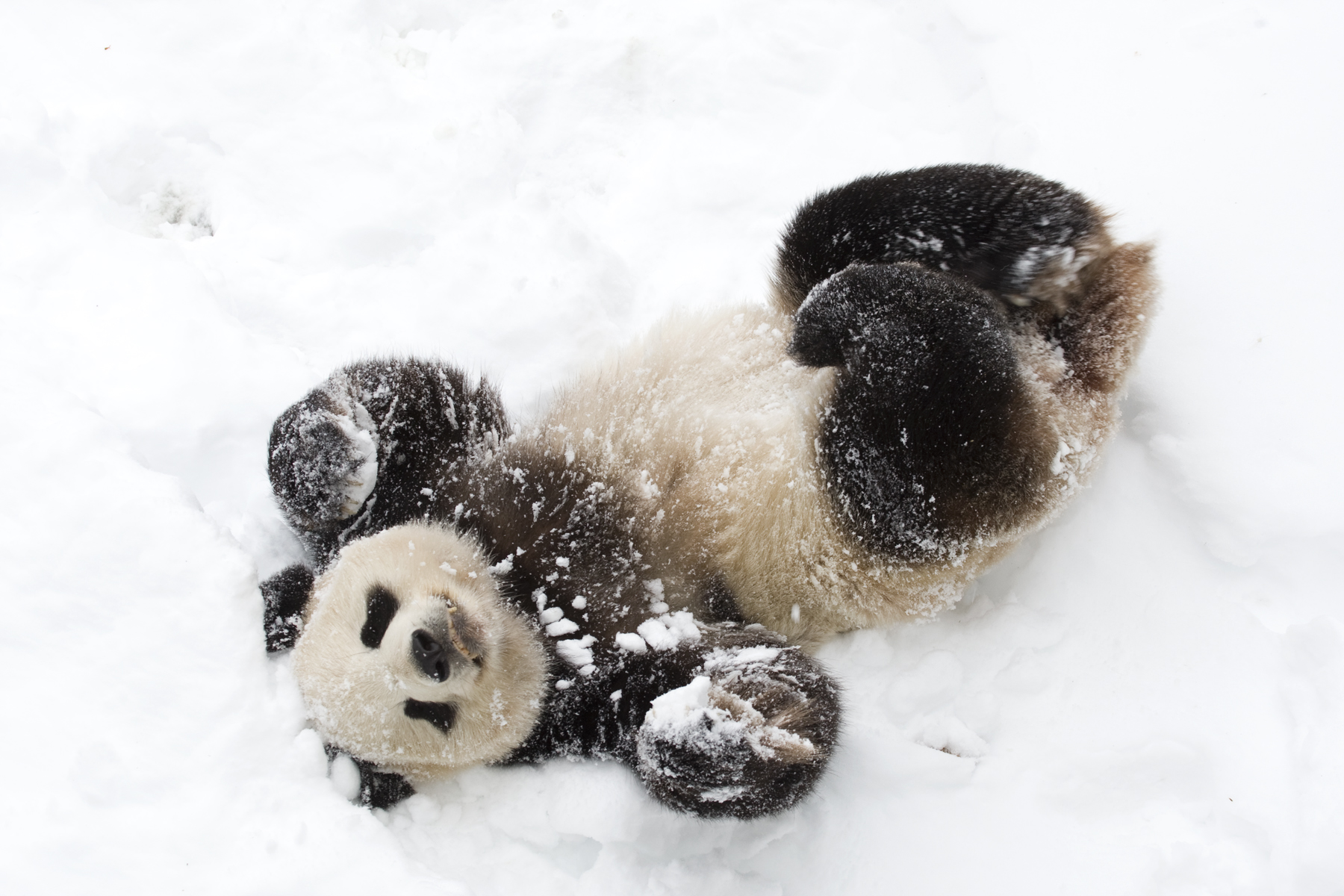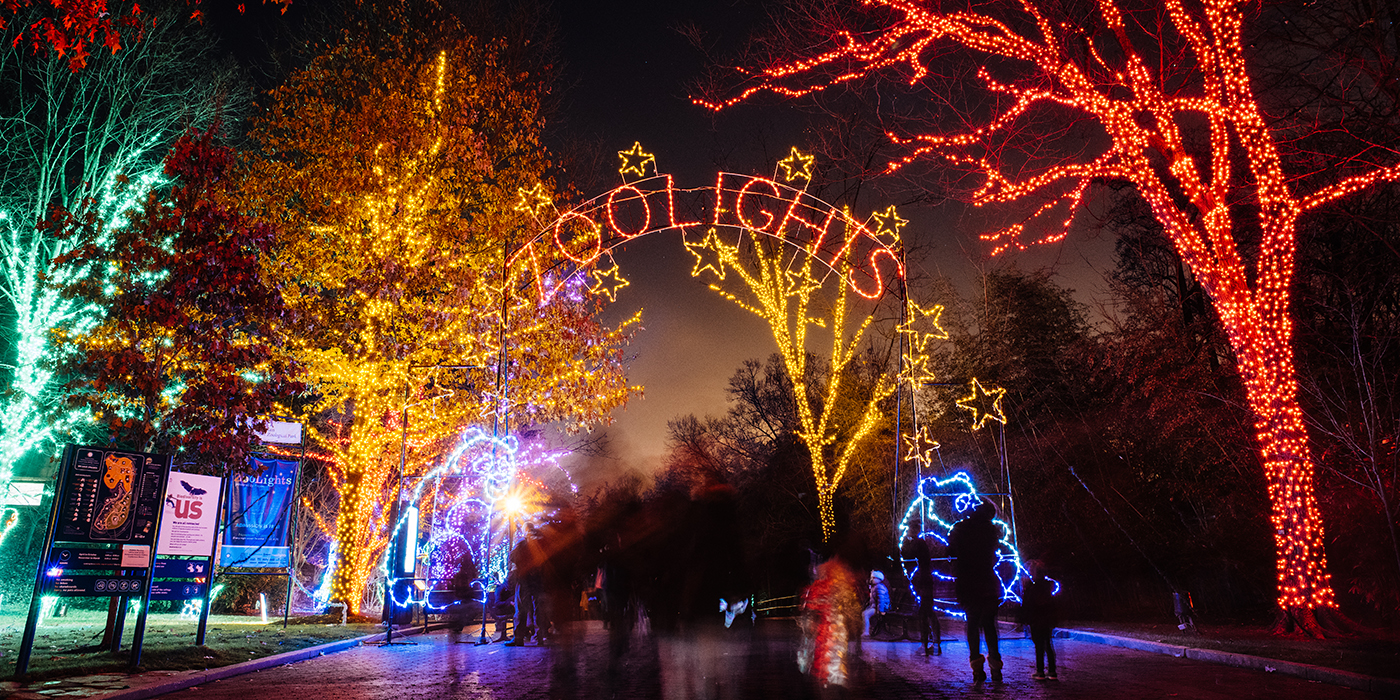Your Go-to Guide for a Winter Day at the Zoo
Note: This article was published in 2020. Some information may be out of date.
Add a little sunshine to a gray winter day with a trip to the Smithsonian’s National Zoo. There’s still plenty to see from December through March. This guide will help you plan for a cold-weather visit.
Myth busted: I won’t see any animals in the winter
A lot of Zoo animals choose to go outside in the winter. Dens, heated rocks and other exhibit features help them stay comfortable, even in the rain and snow. The Zoo also has heated, indoor exhibits that keep animals (and visitors) warm on cold winter days.

Which exhibits should I visit in the winter?
This route highlights some of the exhibits where you’re likely to see animals in cold weather. Follow along or check out the map to plan your own adventure:
- Cheetah Conservation Station: Dens and heated termite mounds keep cheetahs comfortable. You may also see maned wolves outside.
- Asia Trail: Giant pandas are native to a cold climate and tend to be more active in the winter. Look for red pandas and clouded leopards, too.
- Elephant Community Center: Get close to Asian elephants in this heated, indoor barn
- American Trail: This exhibit is home to some of the Zoo’s most active cold-weather animals, including gray seals, ravens, gray wolves, beavers and river otters.
- Amazonia: Trek through a balmy rainforest where emperor tamarins and parrots flit overhead. With a temperature close to 80 degrees, there’s no better spot to defrost.
- Kids’ Farm: Alpacas have soft fleece for extra warmth. Look for goats, cows, donkeys and chickens warming up in the barn.
- Great Cats: See Amur tigers (formerly known as Siberian tigers) Pavel and Nikita.
- Indoor exhibits along Olmsted Walk: Finish your tour with more heated, indoor exhibits – Think Tank, Reptile Discovery Center, Great Ape House and Small Mammal House.
Are there animals I might not see outside?
Animals with outdoor exhibits have the choice to stay indoors, so even on a warm, sunny day they might not be outside. In winter weather, some animals are kept inside for their safety and comfort:
Below 50 degrees
The western lowland gorilla troop won’t be outside, so head inside Great Ape House to see them (and don’t forget to look for infant Moke).
Below 40 degrees
You won’t see orangutans using the O-Line, because orangutans, lemurs and gibbons stay indoors. Abyssinian ground hornbills and Ruppell’s griffon vultures are unlikely to be on exhibit in this weather. Keepers may also move African lions and Sumatran tigers inside. Sloth bears have outdoor access throughout the winter (if their yards aren’t icy), but at temps this low they typically choose not to go outside. Clouded leopards have continual access to their indoor space once temperatures drop below 40 degrees, but there’s still a chance you’ll see them romping around their yard.
See: Orangutans inside Great Ape House; Red-ruffed lemurs in Small Mammal House; Amur tigers at Great Cats; Bald eagles and ravens on American Trail; Andean bears near Amazonia; Cheetahs at Cheetah Conservation Station
Below 35 degrees
Asian small-clawed otters stay inside once temperatures dip this low. At 32 degrees, fishing cats can venture outside if they want but will always have access to their indoor space. American Trail’s brown pelicans move indoors when temperatures are below freezing, and Asian elephants are likely to be indoors, too.
See: North American river otters on American Trail; Sand cats in Small Mammal House; Roseate spoonbills in Amazonia; Asian elephants inside Elephant Community Center
Below 20 degrees
Wallabies move indoors if it’s below 20 and precipitating. Red pandas may go outside but will always have access to their indoor space once temperatures drop below 20 degrees. They’re kept indoors if temperatures drop to 0 with precipitation or -10 without precipitation, but that kind of extreme weather is rare in D.C.
See: At these temps, consider warming up in a heated, indoor exhibit like Amazonia
All winter long
Aldabra tortoises and the American alligator move indoors for the winter season but may have some outdoor access on consistently warm and sunny days.
See: Aldabras, alligator lizards, Cuban crocs and more inside Reptile Discovery Center
Can I still ride the carousel?
If temperatures are above 35 degrees, you can still take a spin on the Speedwell Foundation Conservation Carousel. Tickets cost $3.50 and can be purchased outside the ride.
Is there a place to eat indoors?
At the lower end of the Zoo, you can warm up with a cup of hot cocoa or Bird Friendly coffee from Mane Grill, which also offers lunch options and indoor seating.
Does the Zoo have any winter events?

ZooLights: Hours are extended from Thanksgiving to New Year’s as the Zoo transforms into a winter wonderland. This event features thousands of bright holiday lights, live music, holiday shopping, tasty winter treats and more.
What should I know before I go?
Hours
From Oct. 1 to March 14, the Zoo is open from 8 a.m. to 5 p.m. Indoor exhibit buildings are open from 9 a.m. to 4 p.m. (Amazonia opens at 10 a.m.).
Getting to the Zoo
By Metro or Bus: Take the Metro Rail’s Red Line to the Woodley Park or Cleveland Park station. The Zoo is just a 10-minute walk from either stop. The L1 and L2 Metro Buses also stop outside the Zoo.
By Car: Parking is $30 (or free with some memberships). There are five parking lots, so check the map to see where you’ll enter the Zoo from each lot. Accessible parking spaces can be found in lots A, B and D.
Touring the Zoo
The Zoo sits on a hill with a gradual incline, so wear comfortable walking shoes.
Stop by the Visitor Center when you arrive for bathrooms and water fountains. At the info desk, you can rent strollers, wheelchairs and electronic vehicles, or purchase a Zoo map with coupons to use around the park. Don’t forget to check the schedule of animal feedings and keeper chats, which still take place every day in the winter.



